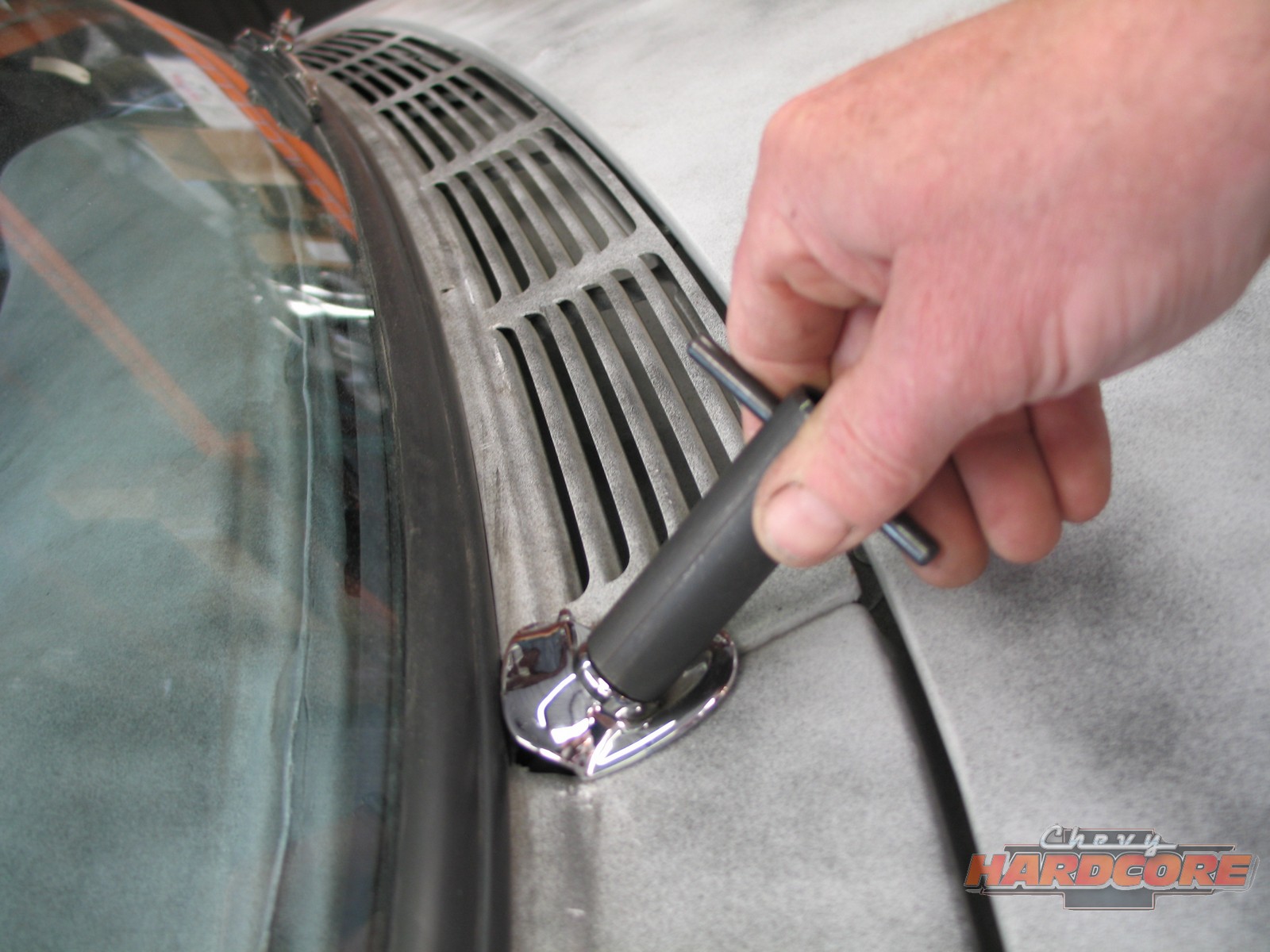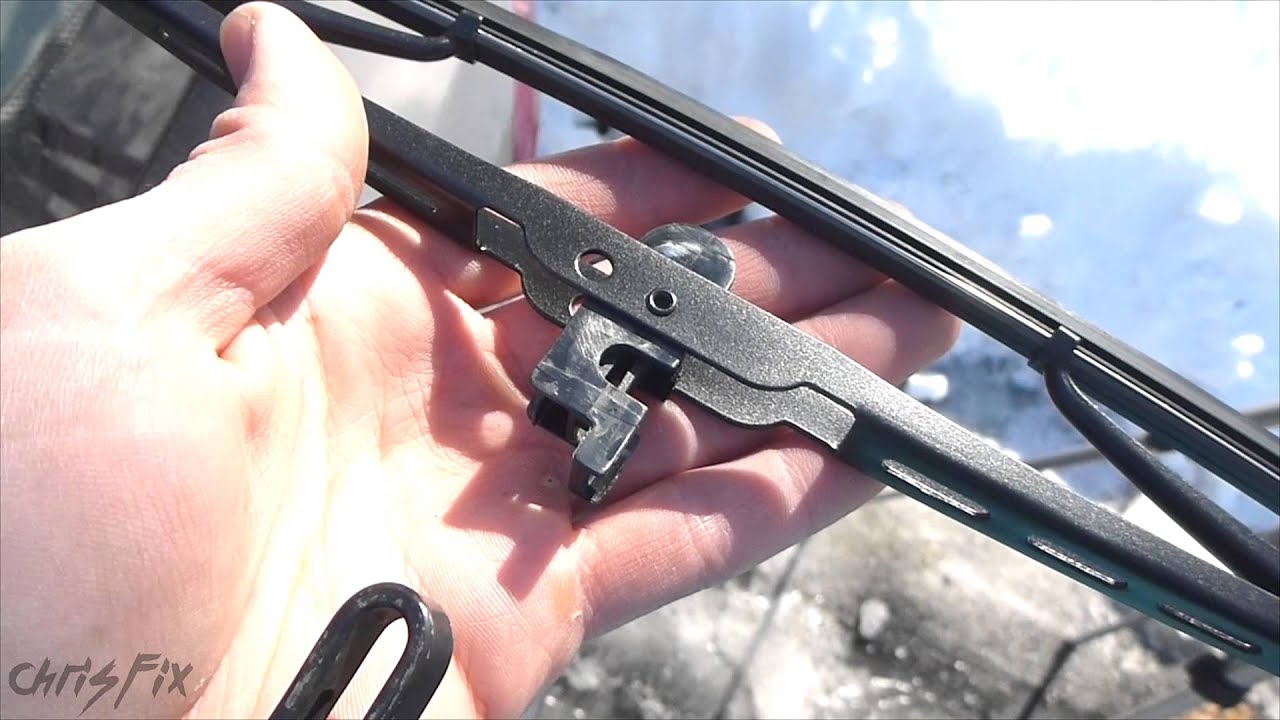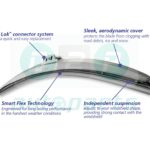Identifying the Culprit: Common Wiper Problems

- Streaky Business: Dealing with Smearing and Streaking
If your windshield wipers are leaving streaks or smearing across your windshield, it’s time to take action. Not only can this make it difficult to see clearly while driving, but it can also be dangerous in rainy or snowy conditions. Here are some steps to take to address this common wiper problem:
- Clean the wiper blades: Sometimes streaking and smearing can be caused by dirt, grime, or debris buildup on your wiper blades. Use a soft cloth or paper towel and some windshield washer fluid to wipe the blades clean. Be sure to get all the nooks and crannies and inspect the blades for any signs of damage or wear.
- Replace the wiper blades: If cleaning doesn’t do the trick, it may be time to replace your wiper blades. Over time, the rubber on the blades can deteriorate, causing them to lose their effectiveness. Look for replacement blades that are the same size and style as your current ones. Follow the manufacturer’s instructions to install the new blades properly.
By taking these simple steps, you can help ensure that your windshield wipers are working properly and keeping your view of the road clear.
- When Wipers Skip a Beat: Addressing Skipping and Chattering
Do your windshield wipers make a skipping or chattering noise when in use? This can be a frustrating and distracting problem, but it’s one that can usually be fixed with a few simple steps. Here are some tips for addressing skipping and chattering wipers:
- Adjust the wiper arm tension: Sometimes, skipping or chattering can be caused by the wiper arm being too loose or too tight. Use a wrench or pliers to adjust the tension of the wiper arm. Refer to your vehicle’s owner’s manual for specific instructions on how to do this.
- Replace the wiper blades: Like with streaking and smearing, worn or damaged wiper blades can cause skipping or chattering. If adjusting the wiper arm tension doesn’t help, try replacing the wiper blades with new ones.
- Check for other issues: If adjusting the wiper arm tension and replacing the blades doesn’t solve the problem, there may be other issues at play. Inspect the wiper linkage and motor for any signs of damage or wear. If you’re not comfortable doing this yourself, take your vehicle to a trusted mechanic for an inspection.
By addressing skipping and chattering wipers, you can improve your visibility and reduce distractions while driving in rainy or snowy conditions.
- Erratic Dance: Understanding Irregular Wiper Movement
When your windshield wipers move in an irregular or erratic pattern, it can be both frustrating and dangerous. It’s important to understand the causes of this problem and how to fix it. Here are some steps to take if you’re experiencing irregular wiper movement:
- Check the wiper arm: Irregular movement can be caused by a loose or damaged wiper arm. Inspect the arm for any signs of damage, such as cracks or bends. Tighten any loose bolts or nuts that attach the wiper arm to the vehicle.
- Replace the wiper motor: If the wiper arm is in good condition, the problem may lie with the wiper motor. Over time, the motor can wear out or become damaged, causing irregular movement. If you suspect this is the case, replace the wiper motor with a new one.
- Consult a professional: If you’re unsure of how to check the wiper arm or replace the wiper motor, it’s best to consult a professional mechanic. They can diagnose the problem and make any necessary repairs.
By addressing irregular wiper movement, you can ensure that your wipers are working properly and keeping your windshield clear in inclement weather conditions.
- Stuck in Place: Finding the Cause of Motionless Wipers
If your windshield wipers are not moving at all, it can be a frustrating and potentially dangerous problem, especially in heavy rain or snow. Here are some steps to take to diagnose and fix the issue:
- Check the fuse: The first thing to check is the wiper fuse. If the fuse is blown, the wipers won’t work at all. Look for the fuse box in your vehicle, usually located in the engine compartment or under the dashboard. Refer to your vehicle’s owner’s manual to find the correct fuse and replace it if necessary.
- Inspect the wiper motor: If the fuse is not the problem, the next step is to inspect the wiper motor. The motor may be faulty or damaged, preventing the wipers from moving. Look for any signs of damage or wear on the motor, and test it using a multimeter. If the motor is faulty, it will need to be replaced.
- Seek professional help: If you’re unsure how to check the fuse or wiper motor, or if replacing the motor doesn’t solve the problem, it’s best to seek professional help. A mechanic can diagnose the issue and make any necessary repairs.
By finding the cause of motionless wipers and fixing the problem, you can ensure that your windshield wipers are working properly and keeping you safe on the road.
Gearing Up: Tools and Materials You’ll Need

- Handy Toolkit: Essential Tools for Windshield Wiper Repair
When it comes to repairing your windshield wipers, having the right tools on hand can make all the difference. Here are some essential tools to keep in your toolkit for windshield wiper repair:
- Screwdriver: A flathead or Phillips screwdriver may be needed to remove screws or bolts that hold the wiper blades or motor in place.
- Pliers: Pliers can be useful for adjusting the tension of the wiper arm or for removing clips that hold the wiper blade in place.
- Wrench: A wrench may be needed to adjust the tension of the wiper arm or to remove bolts that hold the wiper motor in place.
- Multimeter: A multimeter can be used to test the electrical connections of the wiper motor, which can help diagnose any electrical problems.
By keeping these essential tools in your toolkit, you’ll be better equipped to handle any windshield wiper repair tasks that come your way.
- Swap It Out: Replacement Parts You May Require
If you’re experiencing problems with your windshield wipers that can’t be fixed through cleaning or adjustment, it may be time to replace some parts. Here are some replacement parts that you may require for windshield wiper repair:
- Wiper Blades: Over time, the rubber on your wiper blades can wear down, causing streaking, smearing, or skipping. Replace your wiper blades regularly, typically every 6-12 months, depending on use and climate.
- Wiper Arm: If your wiper arm is damaged or bent, it may need to be replaced. This can also be necessary if the tension is not adjustable or is too loose to allow the wipers to function properly.
- Wiper Motor: If the wipers are not moving at all or are moving irregularly, the wiper motor may be the issue. This component is responsible for moving the wiper arm, and if it’s not functioning correctly, it may need to be replaced.
- Fuse: If the wipers are not working at all, a blown fuse may be the cause. Check the fuse box in your vehicle to find the correct fuse and replace it if necessary.
By replacing any necessary parts, you can ensure that your windshield wipers are working properly and keeping your view of the road clear in all weather conditions.
Tackling Wiper Troubles: Solutions for Common Issues

- Clearing the View: Fixing Streaking and Smearing
If your windshield wipers are leaving streaks or smears across your windshield, it’s important to address the problem to maintain good visibility while driving. Here are some steps you can take to fix streaking and smearing:
- Clean the wiper blades: Sometimes, streaking and smearing can be caused by dirt, grime, or debris buildup on your wiper blades. Use a soft cloth or paper towel and some windshield washer fluid to wipe the blades clean. Be sure to get all the nooks and crannies and inspect the blades for any signs of damage or wear.
- Replace the wiper blades: If cleaning doesn’t do the trick, it may be time to replace your wiper blades. Over time, the rubber on the blades can deteriorate, causing them to lose their effectiveness. Look for replacement blades that are the same size and style as your current ones. Follow the manufacturer’s instructions to install the new blades properly.
- Clean the windshield: If the wiper blades are clean and in good condition but streaking and smearing still occur, the problem may be with the windshield itself. Clean the windshield thoroughly, both inside and out, using a high-quality glass cleaner. Be sure to remove any dirt, grime, or other debris that may be contributing to the problem.
By taking these steps, you can ensure that your windshield wipers are working properly and keeping your view of the road clear in all weather conditions.
- Smooth Swipes: Resolving Skipping and Chattering
If your windshield wipers are skipping or chattering across the windshield, it can be a frustrating problem that can impede visibility. Here are some steps you can take to fix skipping and chattering:
- Adjust the wiper arm tension: If the tension on the wiper arm is too loose, it can cause skipping or chattering. Use a wrench or pliers to adjust the tension of the wiper arm. Refer to your vehicle’s owner’s manual for specific instructions on how to do this.
- Clean the wiper blades: Dirt, debris, and buildup on the wiper blades can cause them to skip or chatter across the windshield. Use a soft cloth or paper towel and some windshield washer fluid to wipe the blades clean. Be sure to inspect the blades for any signs of damage or wear.
- Replace the wiper blades: If adjusting the wiper arm tension and cleaning the blades doesn’t solve the problem, it may be time to replace the blades. Over time, the rubber on the blades can wear down, causing them to lose their effectiveness. Look for replacement blades that are the same size and style as your current ones. Follow the manufacturer’s instructions to install the new blades properly.
- Check the windshield: If skipping or chattering persists, there may be damage to the windshield itself. Check for any cracks or chips in the windshield and have them repaired or replaced as needed.
By taking these steps, you can ensure that your windshield wipers are working properly and keeping your view of the road clear in all weather conditions.
- In Sync: Restoring Normal Wiper Movement
If your windshield wipers are moving irregularly or out of sync, it can be both frustrating and potentially dangerous. Here are some steps you can take to restore normal wiper movement:
- Check the wiper linkage: The wiper linkage connects the wiper motor to the wiper arms and is responsible for moving the wipers across the windshield. Check for any signs of damage or wear on the linkage, including loose or missing bolts or worn-out bushings. Replace any damaged or worn parts as needed.
- Lubricate the wiper linkage: If the wiper linkage is in good condition but the wipers are still moving irregularly, lubrication may be needed. Use a silicone-based lubricant to grease the wiper linkage and joints to help restore smooth movement.
- Check the wiper motor: If the wiper linkage and joints are in good condition but the wipers are still not moving smoothly, the wiper motor may be the issue. Test the motor using a multimeter and replace it if necessary.
By restoring normal wiper movement, you can ensure that your windshield wipers are working properly and keeping your view of the road clear in all weather conditions.
- Back in Action: Getting Your Wipers Moving Again
If your windshield wipers are not moving at all, it can be a frustrating problem that can impede visibility in rainy or snowy conditions. Here are some steps you can take to get your wipers moving again:
- Check the wiper fuse: The first thing to check is the wiper fuse. If the fuse is blown, the wipers won’t work at all. Look for the fuse box in your vehicle, usually located in the engine compartment or under the dashboard. Refer to your vehicle’s owner’s manual to find the correct fuse and replace it if necessary.
- Check the wiper motor: If the fuse is not the problem, the next step is to check the wiper motor. The motor may be faulty or damaged, preventing the wipers from moving. Look for any signs of damage or wear on the motor, and test it using a multimeter. If the motor is faulty, it will need to be replaced.
- Inspect the wiper linkage: The wiper linkage connects the wiper motor to the wiper arms and is responsible for moving the wipers across the windshield. Check for any signs of damage or wear on the linkage, including loose or missing bolts or worn-out bushings. Replace any damaged or worn parts as needed.
- Seek professional help: If you’re unsure how to check the fuse, wiper motor, or wiper linkage, or if replacing these parts doesn’t solve the problem, it’s best to seek professional help. A mechanic can diagnose the issue and make any necessary repairs.
By getting your wipers moving again, you can ensure that your windshield wipers are working properly and keeping your view of the road clear in all weather conditions.
Staying Ahead: Preventive Maintenance for Reliable Wipers

- Vigilant Vision: The Importance of Regular Wiper Inspections
Regular inspections of your windshield wipers are important to ensure that they are working properly and keeping your view of the road clear in all weather conditions. Here are some reasons why regular wiper inspections are essential:
- Safety: Clear visibility while driving is critical for your safety and the safety of others on the road. Regular wiper inspections can identify any problems before they become a hazard.
- Longevity: Regular inspections can help extend the life of your wipers. Catching any problems early and addressing them promptly can help prevent more serious issues down the road.
- Climate changes: Changes in weather conditions can affect the performance of your wipers. Regular inspections can help you identify and address any issues that may arise due to changes in climate.
- Peace of mind: Knowing that your wipers are working properly can provide peace of mind while driving in inclement weather conditions.
To ensure that your wipers are working properly, inspect them regularly for signs of damage, wear, or buildup. Check for streaking, smearing, skipping, or chattering and address these issues promptly. Replace wiper blades as needed and follow the manufacturer’s instructions for proper maintenance.
By conducting regular wiper inspections, you can help ensure that your wipers are working properly and keeping you safe on the road.
- Sparkling Clean: Caring for Your Windshield and Wiper Blades
Proper maintenance and care for your windshield and wiper blades are essential to keep them in good working condition and ensure clear visibility while driving. Here are some tips for caring for your windshield and wiper blades:
- Clean your windshield regularly: Clean your windshield regularly, both inside and outside, to remove dirt, grime, and other debris that can build up over time. Use a high-quality glass cleaner and a soft cloth or paper towel to avoid scratching the glass.
- Check and replace wiper blades regularly: Check your wiper blades regularly for signs of wear or damage, such as cracks, splits, or missing rubber. Replace the blades if they are not functioning properly or if they are more than 6-12 months old.
- Keep wiper blades clean: Clean your wiper blades regularly using a soft cloth or paper towel and windshield washer fluid. This will help remove any buildup or debris that can affect their performance.
- Protect your windshield: Use a windshield protector or park your car in a covered area to protect your windshield from harsh weather conditions, such as snow, ice, and extreme heat.
- Avoid using your wipers on a dry windshield: Using your wipers on a dry windshield can damage the blades and the windshield. Only use your wipers when your windshield is wet.
By following these tips, you can help ensure that your windshield and wiper blades are in good working condition and keep your view of the road clear in all weather conditions.
- Out with the Old: Knowing When to Replace Your Wiper Blades
Windshield wiper blades are an essential component of your vehicle’s safety system. Over time, they can wear down, become damaged, or lose their effectiveness, causing streaking, smearing, and reduced visibility. Here are some signs that it’s time to replace your wiper blades:
- Streaking or smearing: If your wiper blades are leaving streaks or smears on your windshield, it’s a sign that they are not functioning properly and need to be replaced.
- Skipping or chattering: If your wiper blades are skipping or chattering across your windshield, it’s a sign that they are not making proper contact with the glass and need to be replaced.
- Cracks or splits: If your wiper blades are cracked or split, they are no longer functioning properly and need to be replaced.
- Uneven wear: If your wiper blades are wearing unevenly, it’s a sign that they are not making proper contact with the glass and need to be replaced.
- Age: Windshield wiper blades typically last 6-12 months, depending on use and climate. If your wiper blades are more than a year old, it’s a good idea to replace them.
By replacing your wiper blades when needed, you can ensure that your windshield wipers are working properly and keeping your view of the road clear in all weather conditions.
- Smooth Sailing: Lubricating Wiper Arm Joints for Optimal Performance
Proper maintenance of your windshield wiper system is essential for optimal performance and clear visibility while driving. One important maintenance task is lubricating the wiper arm joints. Here’s how to do it:
- Clean the joints: Before lubricating the joints, clean them with a soft cloth or paper towel to remove any dirt, grime, or debris that may have built up.
- Choose a lubricant: Use a silicone-based lubricant, which is safe for use on rubber and will not attract dirt or dust. Avoid using grease or oil-based lubricants, which can attract dirt and dust and cause damage to the rubber.
- Apply the lubricant: Apply the lubricant to the wiper arm joints, making sure to get it into all the nooks and crannies. Use a small brush or toothbrush to help spread the lubricant evenly.
- Wipe off any excess: After applying the lubricant, wipe off any excess with a clean cloth or paper towel to prevent it from dripping onto the windshield.
By lubricating the wiper arm joints regularly, you can help ensure that your wiper system is working properly and keeping your view of the road clear in all weather conditions. Be sure to follow the manufacturer’s instructions for lubrication and maintenance.
Conclusion: A Clear Path Forward: Ensuring Your Windshield Wipers Stay Reliable and Efficient
Conclusion: A Clear Path Forward: Ensuring Your Windshield Wipers Stay Reliable and Efficient
Proper maintenance of your windshield wipers is crucial for ensuring clear visibility and safe driving in all weather conditions. By following the tips and guidelines outlined in this article, you can keep your wiper system working reliably and efficiently. Here’s a quick summary of the main points:
- Regularly inspect your wiper blades, linkage, and motor for signs of wear or damage.
- Clean your windshield and wiper blades regularly to prevent buildup of dirt and debris.
- Replace your wiper blades every 6-12 months or as needed.
- Lubricate the wiper arm joints with a silicone-based lubricant to maintain optimal performance.
- Seek professional help if you’re unsure how to diagnose or repair any issues with your wiper system.
By staying vigilant and proactive with your windshield wiper maintenance, you can ensure that you have a clear view of the road ahead, no matter what the weather brings.


